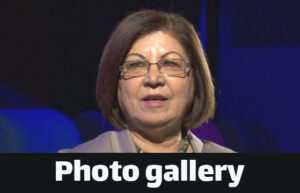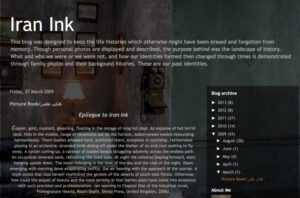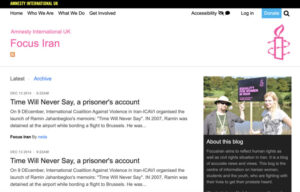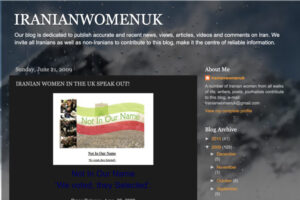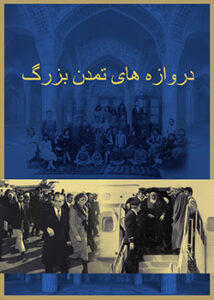Iran in the Millenium
Iran in the Millenium
The prospects, hopes, and aspirations of the post-revolutionary Iranian women and the new opportunities being presented to them as foreign companies arrive to invest and trade in Iran
A practical approach to trade and investment opportunities in Iran
A day conference on 5th November 1998
Forbes House, Halkin St, London SW1X 7DS
Itroduction
I experienced great diffuculty to incorporate women into the theme of this conference, although I am glad that women in general and Iranian women in particular have reached a point where their presence cannot be ignored at any level. Knowing whether and how women can benefit from foreign investment, or why investors should consider employing women instead of men, I decided to briefly review the history of contemporary Iran from a feminine point of view. This, I hope would lead you to a conclusion which is the underlyig purpose of this paper.
In the light of the past 20 years, Iran has suffered a massive blow to her reputation as a beautiful country with peaceful, hospitable people. To the eye of a foreign person, who visits Iran for the first time, colourless, gloomy figures, wrapped in the cloak of secrecy, pose a threat. This is not true. Underneath the shield, peoples of this ancient land are saturated with colourful wants and aspirations, which in essence are no different from any other country. A close look from above shows that Iran has the charachteristics of other developing countries, hidden under cultural manifestations.
This paper tends to give a brief history of contemporary Iran, with an emphasis on women as participants and delegates of change and spearhead of cultural righteousness. It will focus on the importance of socio-cultural aspects on Iranian society in the process of coming out of isolation. The impact of foreign investment in this process: employment opportunities for women and the benefits gained by foreign companies.
Women and politics
A brief history
Throughout the 2oth century, Iran has experienced two revolutions, two cou d’etats and many social upheavals. People’s participation in the revolution of 1907 and 1979, though 7 decades apart, aimed similar demands: democracy, freedom and social justice. Women, as an opporessed group were active in both revolutions, though their demands differed slightly, given the time span in between. Naturally, the road women were taking in bringing themselves out of seclusion, being considered equal to men and having their rightful place in the society, was not easy to walk on.
Iran, like other parts of the Middle East with a masculinistic, patriarchal sociaty, the concept of ‘woman’ manifests itself in limited dimensions. Women as vituous mothers, obedient wives, subjugated public figures , and recently as the the blind followers, are all that can be tolerated. After the constitutional revolution of 1907, feminists, including many men, who were active in the intellectual thought raised their voices against the situation of women. These were mainly influenced by foreign missionaries, who had settled in Iran in the 19th century and opened schools for girls, and a number of people who travelled to Europe. The October Revolution in the neibouring Russia and the emergence of socialist and communist parties in Iran had all a great influence in the awakening of the Iranian women.
Although Reza Shah took power by way of a coup, he maintained high aspirations for the country by transforming it into a modern state. A modern Iran could not materialise if women, half of the population remained in harams, deprived of basic rights. Reza Shah had no strategy to emanciate women but he was clever enough to see women’s presence as a necessity ot modernisation. Being a dictator by nature, his plans of unveiling women, bringing them into the social arena, giving them opportunities to study werte carried out by way of force. Reza Shah’ policies however, did not extend into private realm. Therefore, the structure of the Iranian society remained untouched. Unlike Turkey which accepted a universal secular constitution, in Iran, issues central to the emancipation of women remained in the domain of the religion. In addition, Iranian society was not prepared to accept sudden and forceful changes. Shortly afterwards, it lapsed into its old order. In all, Reza Shah used women as a symbol of a modern Iran, without which modernity was void of its concept. On the other hand, modernity and modern ideas were taken by a minority of women ans men, who entered the social realm. The majority remained alienated and deprived of the benefits which change brought along with it. However, as the world moved on, the number of educated women increased and modern Iranian woman stitched herself to a society which had not changed in essence.
Mohamad Reza Shah’s ideas of women’s emancipation were far more backward than his father. He had no belief in the equality of the sexes. Various factors contributed to women’s camapains for equal rights. Having powerful women at the top, who aspired change from above, the increased number of women who proved they are no less than men in many areas, and the influence of femonist liberation movements forced the Shah to grant women the right to vote in early 1960s. Legislative changes, especially the Family Protection Law brought a limited degree of equality between the sexes. By the end of 1970s, thousands of women worked in public and private sectors, although the majority stayed on the sideline and remained alienated to the whole process. In the eye of the world, modern Iranian woman was a window, through which Iran could be judged as an advanced state.
The utopia of an Islamic state, which freed the majority sidelined women from modern notions and gave them opportunities within a framework which was acceptable to them and the male population, took millions to the streets. Political religion utilised the potential of mutiny and revolt to its advantage. The power that women showed during the upheavals had a paradox hidden in itself. As a contingent of blind followers, they could be used for mass mobilisation. As half of the population, they had to be put in place before further radicaisation took the state of affairs out of hand. Above all, during the Pahlavis, women were establishjed as the indicator, the agent of modernisation. An Islamic state must be born by eliminating the modern women and creating the Islamic woman. The window through which the world watched Iran suddenly changed its appearance.

